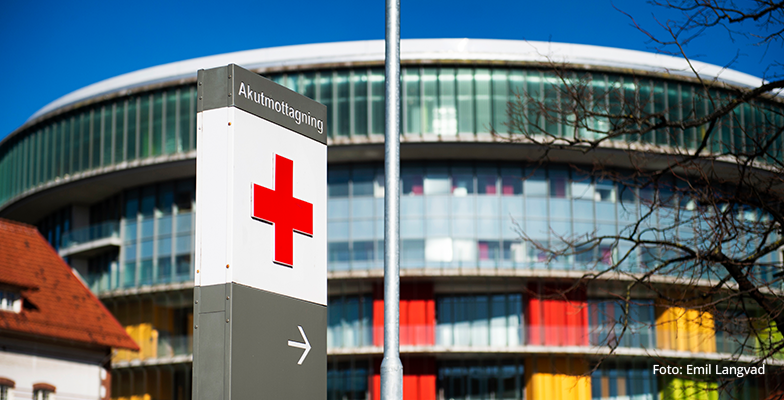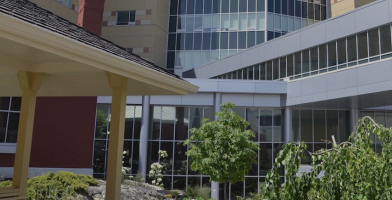Future-proofing hematology laboratories with Digital Cell Morphology #1
Preparing hematology laboratories for future change is a necessity. Nowhere is this mindset more evident than Region Skåne, a network of dispersed laboratories in southern Sweden. To ensure consistency, competency and proficiency across all of their 9 locations, Region Skåne has systematically implemented Digital Cell Morphology (DCM) technology and software for over two decades—with remarkable results.

The importance of proficiency
Proficiency is of paramount importance in the laboratory. To meet accreditation standards and deliver consistently first-rate services to clinicians and patients, hematology professionals must ensure that every result they produce is of verifiably high quality. But how can laboratories do this? The answer – ensure that every single member of staff is working at the same level of competency.
To do this, laboratories must continually promote competency and test the proficiency of their staff. As well as assuring that working practices follow protocol and that result and process performance remain consistent, proficiency testing allows laboratory and personnel managers to connect with their staff, identify areas for potential upskilling, and invest in an individual’s career progression. This has the additional benefit of reducing staff turnover: something that is especially valuable in hematology, which is facing both increasing workloads and widespread staff shortages.
Issues of consistency and competency are even more pressing for distributed laboratory networks. The more locations within a network, and the further apart they sit, the more complex, variable and logistically challenging it becomes to guarantee uniform levels of staff proficiency. However, this doesn’t mean that standards can drop, says Camilla Streimer, Biomedical scientist and Laboratory Process Manager hematology at Region Skåne—far from it.
“Wherever you offer a service, you should ensure standards remain the same,” says Camilla. “Just because you’re a small hospital, it’s not okay to be less competent. Everyone must be on the same page as all patients must receive the same quality of care.”
Region Skåne comprises 10 hematology laboratories scattered across southern Sweden—four metropolitan, and five provincials. To ensure that competence and consistency remains central to their operations at every step, Region Skåne was an early adopter of Digital Cell Morphology (DCM) technology. “We wanted to make it easier for staff to become competent at differentials”, adds Frida Johansson, Biomedical scientist, operations manager at Region Skåne “And at the time when we were searching for a solution, around 20 years ago, CellaVision was it.”
Preparing for generation change
Frida’s workplace, Malmö University Hospital, was the very first hospital in Sweden to, in 2001, introduce their DCM system of choice: CellaVision. Since then, the network has equipped many more sites with advanced DCM instruments. Overall, Region Skåne have four systems, four DC-1s, and have installed remote review systems at all 9 of their laboratories. They also have CellaVision Proficiency software at all nine of their laboratories that perform cell morphology, to enable them to assess staff proficiency and promote competency amongst their technicians.
Since equipping their network with DCM, Region Skåne has seen higher staff retention rates, and has been better able to attract and onboard new hires. Hematology laboratories struggle to source and retain experienced staff due to a shortage of skilled candidates, and this issue is becoming increasingly pressing as more and more experienced technicians near retirement.
Small or remote laboratories struggle even more, as they must compete against larger metropolitan hubs for talented staff. However, CellaVision brings a connectivity that closes the gap between ‘hub’ and ‘spoke’, helping to alleviate smaller laboratories’ hiring struggles and empowering technicians at all sites to progress in their career and gain new competencies. This in turn increases the chances of a staff member staying at a laboratory. “It isn’t easy to find technicians. It’s really difficult to recruit,” adds Frida. “By educating our staff, they’re more likely to stay at our organization, and we then benefit from their skill.”
Due to their heightened familiarity with digital interfaces, younger technicians find DCM an especially appealing way to work, making Region Skåne’s laboratories attractive to recent graduates. “Right now, we experience a high turnover of staff with slightly younger personnel in our laboratories all over Skåne” says Camilla. “We’re putting a lot of effort into education to ‘future-proof’ our operations. This would be impossible without CellaVision.”
Stay tuned for part #2.
News
Overcoming the challenges of distributed working #3
Expertise on tap Like so many small laboratories, VIHA’s more remote spoke sites found it difficult...

Overcoming the challenges of distributed working #2
Confident, consistent, competent Alongside fast, remote access to data and expertise, the...

Overcoming the challenges of distributed working #1
Hematology laboratories are under increasing pressure to do more with less. To alleviate this stress...
